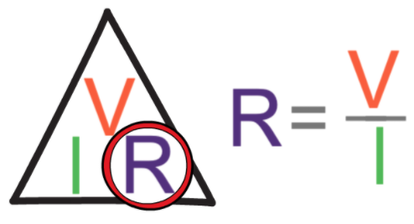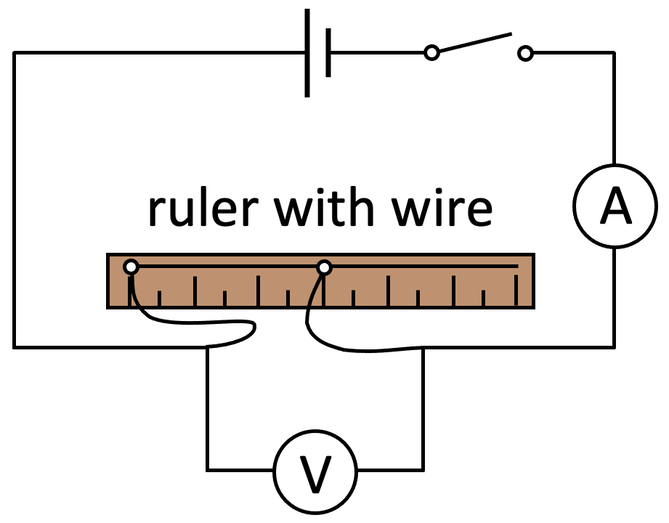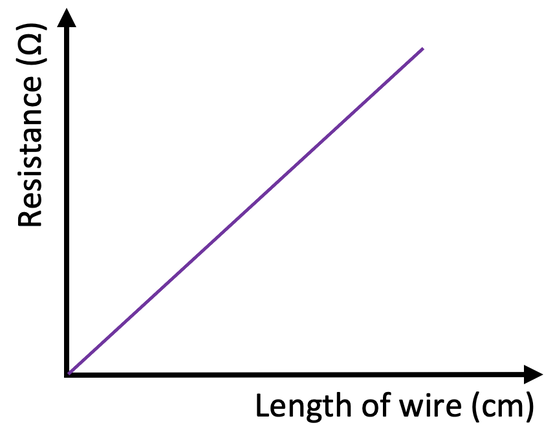In this section we are going to look at an experiment that investigates how the length of a wire affects the resistance of the wire. In order to work out the resistance of a component (in this case, a length of wire), we divide the potential difference by the current. The formula triangle and equation for working out resistance is shown below.
We measure the potential difference of a component by placing a voltmeter in parallel around the component that we are investigating (we place the voltmeter in parallel around the length of wire). We measure the current by placing an ammeter in series with the component that we are measuring. The circuit will also contain a switch. We set up the circuit like what is shown below.
We start this experiment by placing one of the crocodile clips at 0 cm on the ruler. We then place the second crocodile clip at 10 cm on the ruler; the distance between the first and second crocodile clip will be 10 cm. We then close the switch and find the values for potential difference and current.
We then open the switch and move the second crocodile clip 10 cm further away; the second crocodile clip will now be at 20 cm. We close the switch and record the values for potential difference and current.
We repeat this process until we have values for potential difference and current for quite a few different lengths of wire.
After we have all of our values, we can find the resistance for the different lengths of wire by dividing the potential difference by the current (R = V ÷ I). We can then plot a graph with the length of wire on the x-axis and the resistance on the y-axis. We also add a line of best fit onto the graph.
We then open the switch and move the second crocodile clip 10 cm further away; the second crocodile clip will now be at 20 cm. We close the switch and record the values for potential difference and current.
We repeat this process until we have values for potential difference and current for quite a few different lengths of wire.
After we have all of our values, we can find the resistance for the different lengths of wire by dividing the potential difference by the current (R = V ÷ I). We can then plot a graph with the length of wire on the x-axis and the resistance on the y-axis. We also add a line of best fit onto the graph.
The line of best fit for the graph should start at the origin and be perfectly straight. This is because the resistance of a wire is directly proportional to the length of the wire; as the length of a wire increases, so too does the resistance of the wire (and, as the length of a wire decreases, so too does the resistance of the wire). This is known as Ohm’s law.



